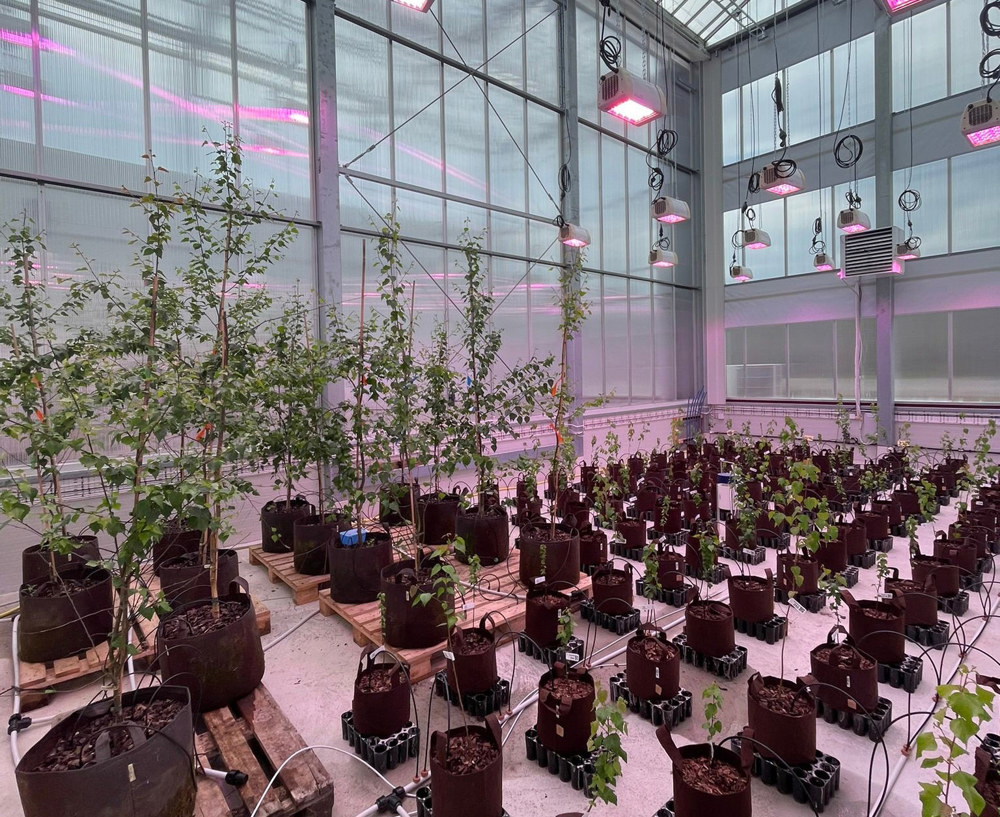Findings of early flowering in young birch seedlings surprises the researchers at Skogforsk affiliated with Trees For Me. PhD student Giovanni Bozza explains the observations.
In the research project, PhD student Giovanni Bozza, affiliated with Trees For Me, Skogforsk and SLU, is focusing on increasing the understanding of flowering induction and seed production of silver birch, and how this can contribute to the improvement of seed material for the forestry sector.
“Flowering is a critical factor for success in plant breeding. When trees flower, we can cross them and produce new material for testing. Flowering in young trees is unusual in nature but becomes necessary if, for example, genomic selection (see facts box) is to be applied as the breeding method”, says Giovanni Bozza.
Several treatments to increase speed of flowering
The recent findings of birch trees producing male flowers earlier than expected are interesting observations despite that the trees have not yet produced pollen.
“Reducing the breeding cycle from the regular 10-12 years for silver birch to single years would allow for tree breeders to speed up their breeding programmes”, says Giovanni Bozza.
 Birch seedlings treated with light around the clock in the Ekebo greenhouse. Photo: Giovanni Bozza
Birch seedlings treated with light around the clock in the Ekebo greenhouse. Photo: Giovanni Bozza
The causes of the early flowering still remain to confirm. The birch seedlings were of different genetic origin and were exposed to different treatments. e.g. a combination of plant growth hormones and light. Early observations show that only the trees exposed to light around the clock produced flowers.
“However, a proper inventory and data analysis must be done before we can confirm this”, Giovanni Bozza explains.
Better growth and remaining challenges
The new greenhouse in Ekebo has increased the possibilities of testing which conditions affect the birch trees and in what ways, and new findings are continuously discovered.
“In May we initiated the experiment to induce flowering in the one-year-old birches, which were about 30 cm high at the start of the experiment. After three months, the saplings had reached an average height of 3,2 meters, and 40 % of them had developed male flowers”, says Giovanni Bozza.
Shorter breeding cycles for silver birch could contribute to its competitiveness in future Swedish forestry, compared to, for example, Norway spruce which is one of the dominant tree species today. Giovanni Bozza explains that the birches in the experiment will now undergo a winter rest and hopefully survive the winter. In order for the seed production to be prosperous next year the female flowers need to develop according to plan, the pollen must be fertile, and the pollination of the female flowers must be successful.
“The next step is to make the inventory of all the plants in the chambers (492 plants), move half of them into new chambers to induce the dormancy, try to induce the production of female flowers and then of course, make quality tests on the seeds as well as statistical analyses. There is no clear path to follow since there are no indications on how to proceed in the literature. We are proceeding by doing”, Giovanni Bozza concludes.